Middle East
Iran hangs man convicted of spying for Israel’s Mossad | Espionage News
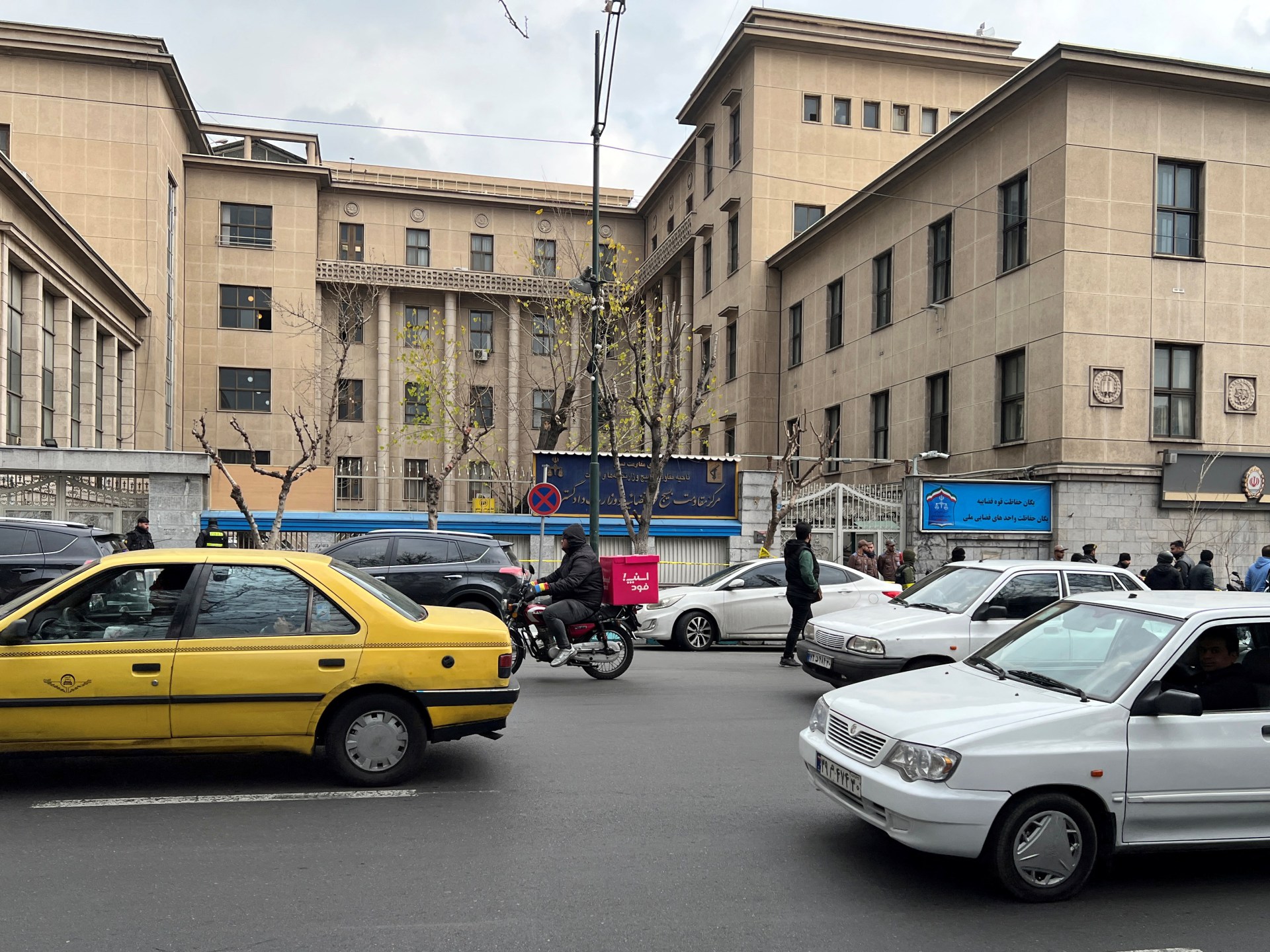
Mohsen Langarneshin was convicted of aiding Mossad operations for two years, including the killing of an IRGC colonel.
Iran has executed a “senior spy” on charges of cooperating with Israel’s Mossad intelligence agency, its judiciary says.
Mohsen Langarneshin, who was hanged on Wednesday morning, provided Mossad with extensive “logistical, technical and operational support” for two years, starting in 2020, the judiciary said via its official news agency, Mizan.
One of the key accusations against Langarneshin was his involvement in the May 2022 killing of an Islamic Revolutionary Guard Corps (IRGC) colonel, Sayyad Khodai, who was shot dead by two motorcyclists on his way home in Tehran. According to The New York Times, Israel informed the United States that it was responsible for the killing.
Mizan reported that Langarneshin bought a motorcycle to track Khodai’s movements, relayed the information to Mossad and was present during the killing. Additionally, he was accused of supporting an attack on an industrial site in Isfahan, affiliated with Iran’s Ministry of Defence and Armed Forces Logistics.
Iran cited “extensive intelligence and technical evidence” linking Langarneshin to these operations, and said he “fully confessed” to his involvement.
Reactions
However, Mahmood Amiry-Moghaddam, the head of the Norway-based Iran Human Rights (IHR) monitor, said Langarneshin was sentenced after an unfair trial and a confession was obtained by torture.
“The Iranian authorities’ execution machine is accelerating every day, taking the lives of more people,” he told the AFP news agency, describing the executions as “extrajudicial killings”.
The US-based Abdorrahman Boroumand Center, which had campaigned over his case, said Langarneshin had been convicted after his July 2023 arrest at a Revolutionary Court presided over by judge Abolghasem Salavati, sanctioned by the US and EU and notorious for his handing out of death sentences.
“He denied all charges, stating that his confessions were extracted under torture,” the group said.
The Iran-born British actor and activist Nazanin Boniadi wrote on X: “The bloodthirsty Islamic Republic has executed yet another innocent.”
Previous executions
Caught in a decades-long shadow war with Israel, Iran has executed numerous individuals over their alleged links to Mossad, particularly those accused of sabotage and assassination efforts aimed at undermining its nuclear programme.
In December 2023, three men and a woman were executed for their alleged links to Mossad.
Langarneshin’s execution comes amid renewed US-Iran nuclear talks, which Foreign Minister Abbas Araghchi has accused Israel of attempting to derail. A fourth round of Oman-mediated negotiations between Washington and Tehran is scheduled for Saturday in Rome, according to Tehran.
Araghchi described the last round of indirect talks, held on April 26 in Muscat, as “extremely serious”, but he remained “extremely cautious” about their potential success.
Middle East
From Gaza to Vietnam, what is the value of a photo? | Opinions
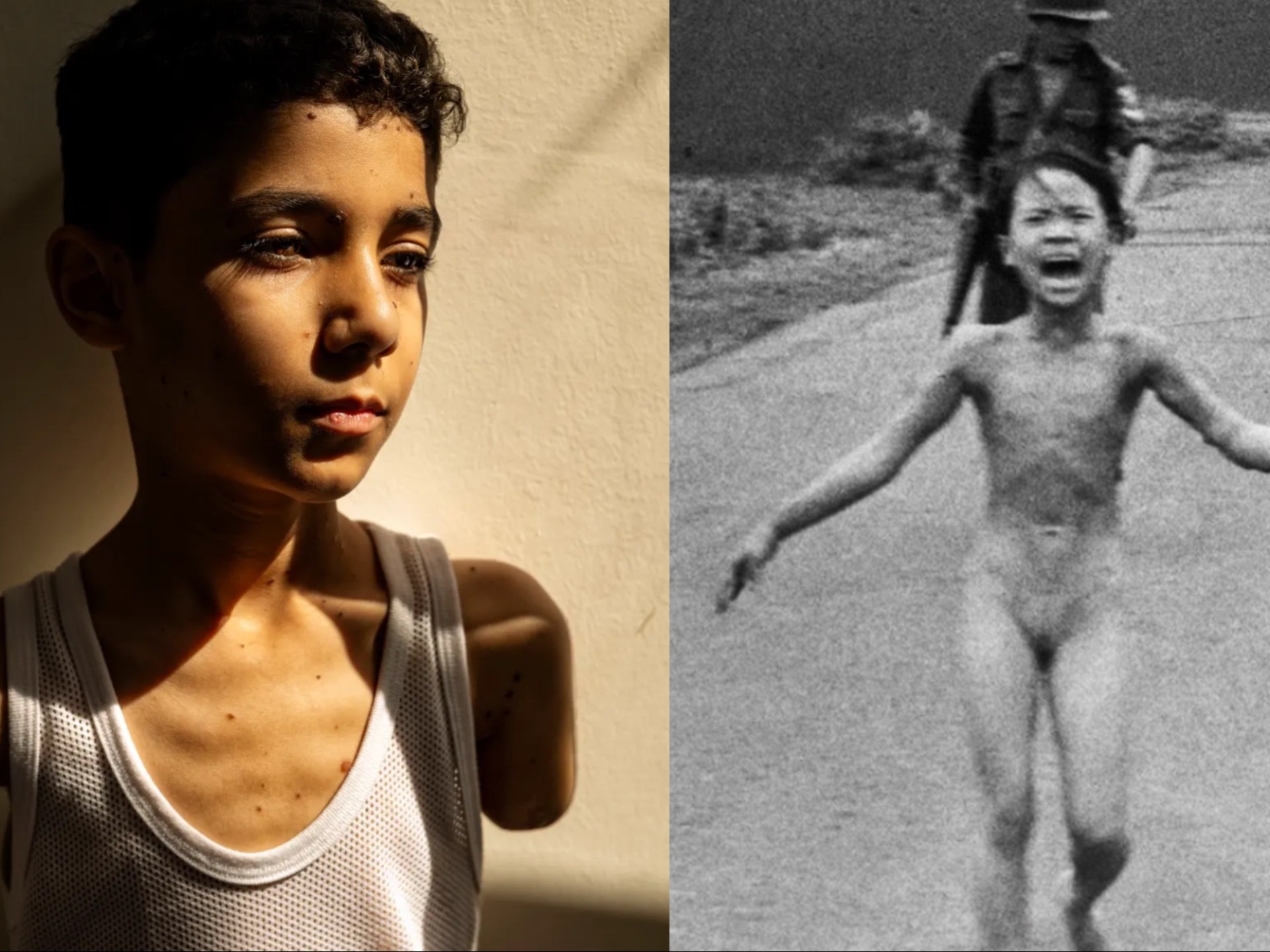
This month, Palestinian photographer Samar Abu Elouf won the 2025 World Press Photo of the Year award for her image titled Mahmoud Ajjour, Aged Nine, taken last year for The New York Times.
Ajjour had both of his arms blown off by an Israeli strike on the Gaza Strip, where Israel’s ongoing genocide has now killed at least 52,365 Palestinians since October 2023. In the award-winning photograph, the boy’s head and armless torso are cast in partial shadow, his gaze nevertheless intense in its emptiness.
Speaking recently to Al Jazeera, Ajjour recalled his reaction when his mother informed him that he had lost his arms: “I started crying. I was very sad, and my mental state was very bad.” He was then forced to undergo surgery with no anaesthetic, an arrangement that has been par for the course in Gaza on account of Israel’s criminal blockade of medical supplies and all other materials necessary for human survival. “I couldn’t bear the pain, I was screaming very loud. My voice filled the hallways.”
According to Abu Elouf, the first tortured question the child posed to his mother was: “How will I be able to hug you?”
To be sure, Abu Elouf’s portrait of Ajjour encapsulates the cataclysmic suffering Israel has inflicted – with the full backing of the United States – upon the children of the Gaza Strip. In mid-December 2023, just two months after the launch of the genocidal assault, the United Nations Children’s Fund reported that some 1,000 children in Gaza had already lost one or both legs.
Fast forward to the present moment and the UN’s warning, in early April, that at least 100 children were being killed or injured on a daily basis in the besieged territory. They say a picture is worth a thousand words – but how many pictures are needed to depict genocide?
Meanwhile, as the slaughter proceeds unabated in Gaza, today – April 30 – marks the 50th anniversary of the end of the Vietnam War, another bloody historical episode in which the United States played an outsized role in mass killing. As it so happens, a nine-year-old child also became the face – and body – of that war: Kim Phuc, the victim of a US-supplied napalm attack outside the South Vietnamese village of Trang Bang in June 1972.
Nick Ut, a Vietnamese photographer for The Associated Press, snapped the now-iconic image of Phuc as she ran naked down the road, her skin scorched and her face the picture of apocalyptic agony. The photo, which is officially titled The Terror of War but is often known instead as Napalm Girl, won the World Press Photo of the Year award in 1973.
In an interview with CNN on the photograph’s own 50th anniversary in 2022, Phuc reflected on the moment of the attack: “[S]uddenly, there was the fire everywhere, and my clothes were burned up by the fire … I still remember what I thought. I thought: ‘Oh my goodness, I got burned, I will be ugly, and people will see me [in a] different way.’”
This, obviously, is nothing any child or adult should have to endure – physically or psychologically – in any remotely civilised world. After spending 14 months in hospital, Phuc continued to suffer from extreme pain, suicidal thoughts and shame over having the photo of her naked and mutilated body exposed for all to see.
And yet napalm was but one of many weapons in a US-backed toolkit designed to make the planet safe for capitalism by incinerating and otherwise disfiguring human bodies. To this day, Vietnamese are maimed and killed by the unexploded leftovers of millions of tonnes of ordnance the US dropped on the country during the war.
The lethal defoliant Agent Orange, which the US used to saturate swaths of Vietnam, also remains responsible for all manner of incapacitating birth defects and death half a century after the war’s end.
In her 1977 book On Photography, the late American writer Susan Sontag considered the function of images like Ut’s: “Photographs like the one that made the front page of most newspapers in the world in 1972 – a naked South Vietnamese child just sprayed by American napalm, running down a highway toward the camera, her arms open, screaming with pain – probably did more to increase the public revulsion against the war than a hundred hours of televised barbarities.”
Public revulsion aside, of course, US-backed barbarities in Vietnam went on for three more years after Ut published his photo. Now, the fact that pretty much every image out of the Gaza Strip could be labelled The Terror of War simply confirms that barbarity is still a brisk business.
And in the current era of social media, in which both still images and videos are reduced to rapid-fire visuals for momentary consumption, the desensitising effect on the public cannot be understated – even when we’re talking about nine-year-old children with both of their arms blown off.
In an Instagram post on April 18, Abu Elouf wrote: “I always have, and still do, wish to capture the photo that would stop this war – that would stop the killing, the death, the starvation.”
She went on to plead: “But if our photos can’t stop all this tragedy and horror, then what is the value of a photo? What is the image you’re waiting to see in order to understand what’s happening inside Gaza?”
And on that bleak note, I might ask a similar question: What, in the end, is the value of an opinion article?
The views expressed in this article are the author’s own and do not necessarily reflect Al Jazeera’s editorial stance.
Middle East
UK joins US air strikes on Houthi rebel sites in Yemen | Houthis News
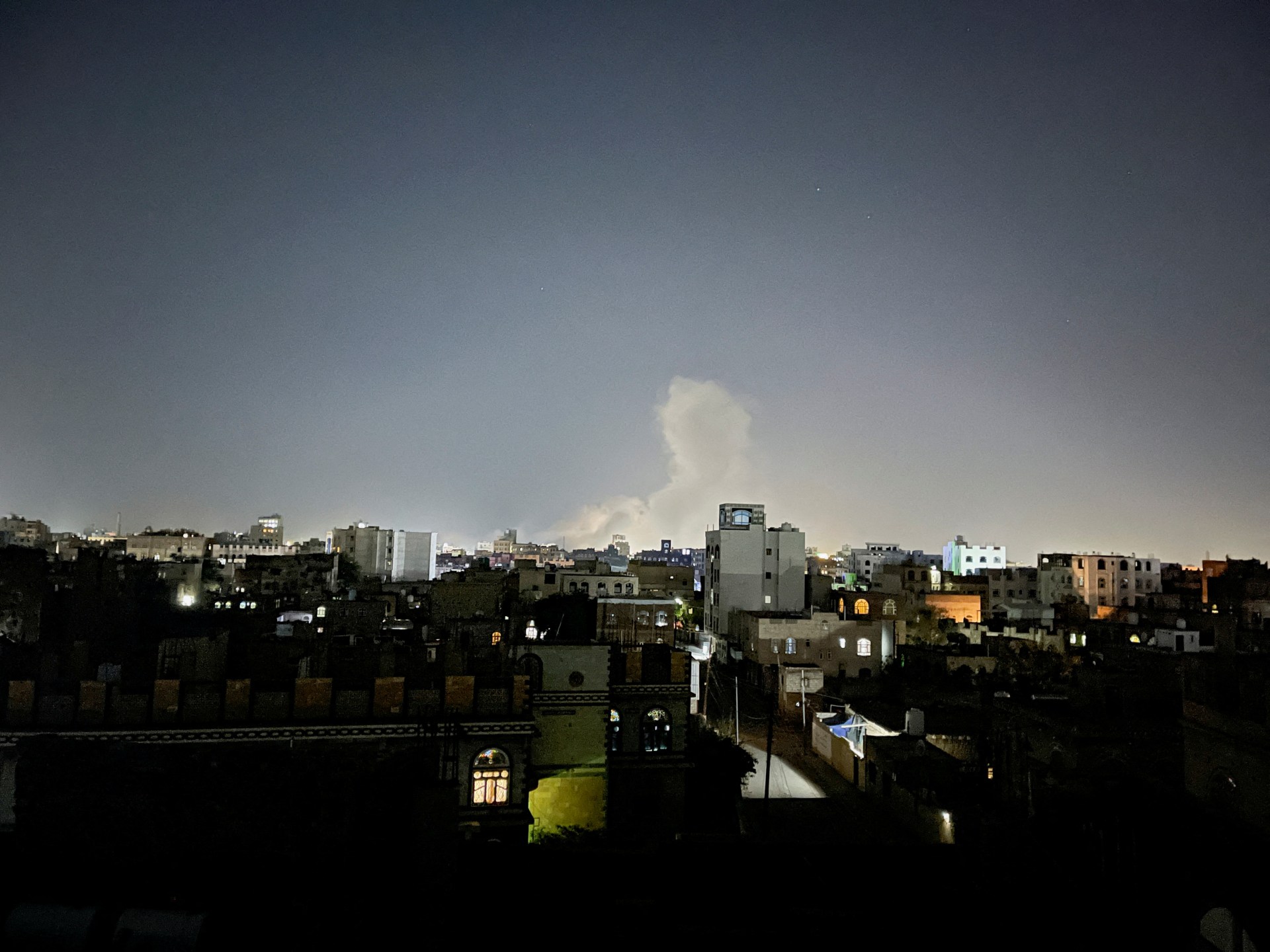
Overnight strikes hit Houthi drone manufacturing sites, says British Defence Ministry.
Forces from the United States and the United Kingdom have carried out joint air strikes near Yemen’s capital, Sanaa, targeting what British authorities say were drone manufacturing facilities of the Houthi armed group.
The UK on Wednesday morning offered a detailed explanation for launching the strike, unlike the US, which gave few details about hundreds of strikes it has conducted since beginning its renewed campaign on March 15.
The strikes, which took place about 24km (15 miles) south of Sanaa overnight, hit buildings identified by UK intelligence as sites used to produce drones that have been used in attacks on vessels in the Red Sea, according to the British Ministry of Defence.
The ministry said the operation was planned to minimise civilian casualties, though no figures were provided.
The US, which has launched repeated strikes on Houthi targets over the past month, has yet to comment on the joint operation.
In mid-March, US President Donald Trump ordered the military to wage “decisive and powerful” strikes on the Houthis so long as they continue targeting shipping in the Red Sea.
Since then, the Pentagon says the strikes have hit more than 1,000 targets across Yemen, “killing Houthi fighters and leaders … and degrading their capabilities”.
But concerns about civilian casualties are growing.
According to Houthi-affiliated media, a recent US strike on Monday hit a detention centre holding African migrants, killing 68 people.
And Mwatana for Human Rights, a Sanaa-based rights group, says it has documented hundreds more civilian casualties in recent US attacks.
“For over a decade of armed conflict, Yemeni civilians have been the targets of indiscriminate and disproportionate attacks by warring parties,” said Radhya al-Mutawakel, chairwoman of Mwatana.
“At a time when they were hoping to see an end to this bloody chapter of their lives, they now find themselves potential targets of US forces’ attacks,” she added.
An unnamed US defence official told the Reuters news agency that the Pentagon is aware of claims of civilian casualties from Monday’s strike and is conducting an assessment.
The Houthis have controlled large swaths of Yemen for nearly 10 years. Since November 2023, they have been launching missile and drone attacks on what they say are Israel-linked vessels in the Red Sea, disrupting global supply routes.
Middle East
Israel releases Gaza paramedic who survived deadly attack on health workers | Gaza News
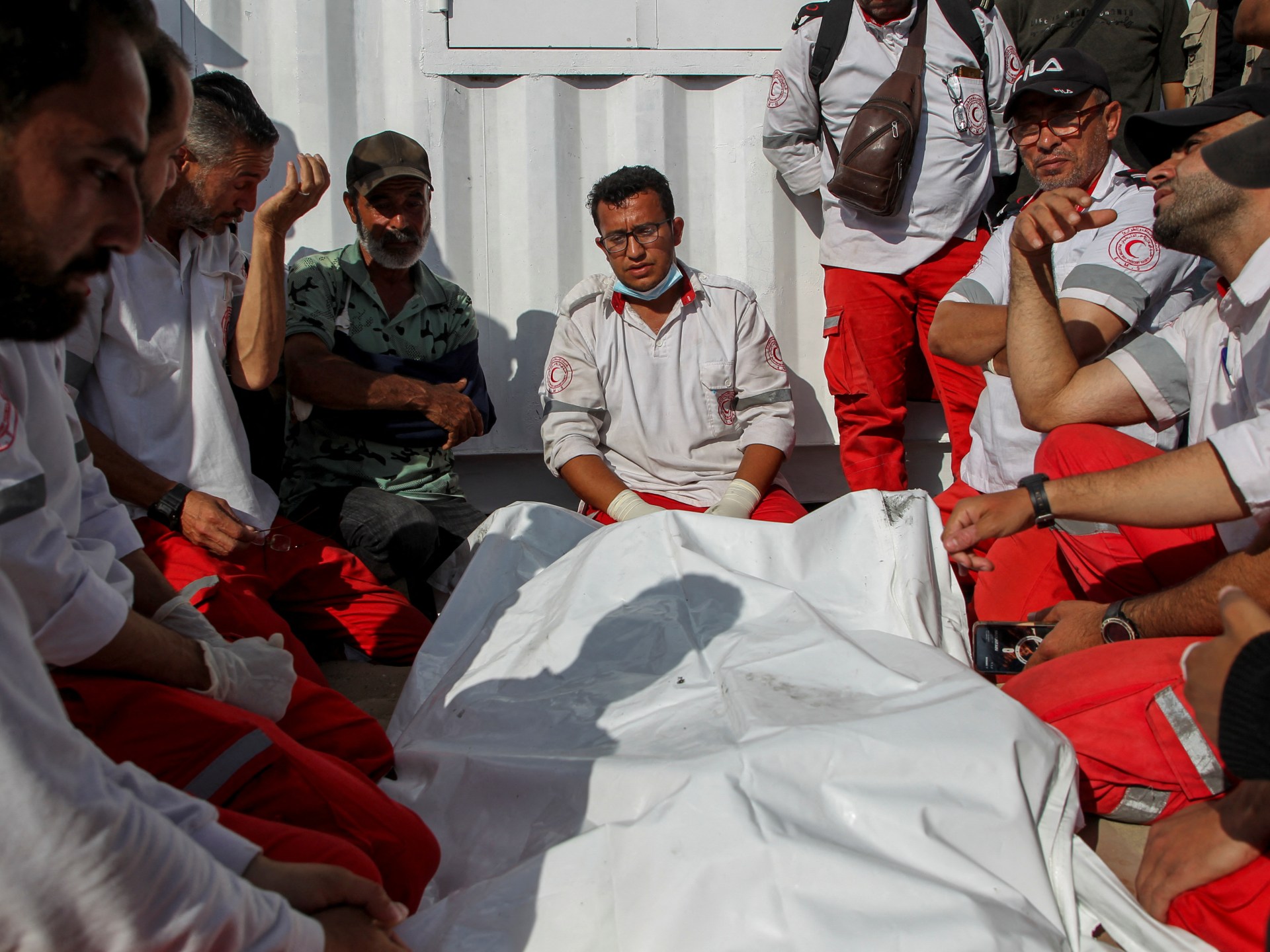
A Palestinian paramedic who survived a deadly Israeli attack on a group of first responders in southern Gaza last month has been released from Israeli detention, the Palestine Red Crescent Society (PRCS) says.
Assaad al-Nassasra, an ambulance driver, was among at least 10 Palestinian detainees who were released into the Gaza Strip on Tuesday, the PRCS said.
The agency shared footage on social media that showed a visibly emotional al-Nassasra, dressed in a bright red PRCS jacket, embracing his colleagues after 37 days in Israeli detention.
His exact whereabouts had been unknown after the Israeli military opened fire on Palestinian first responders in the Rafah area of southern Gaza on March 23, killing 15 health workers in an attack that drew widespread outrage and calls for an independent investigation.
“He had been arrested while performing his humanitarian duty during the massacre of medical teams in the Tel Al-Sultan area of Rafah Governorate,” the PRCS said.
The first moments of colleague Asaad Al-Nsasrah’s arrival and reunion with his teammates following his release today, after 37 days in detention by the occupation forces. He had been arrested while performing his humanitarian duty during the massacre of medical teams in the Tel… pic.twitter.com/TzGHbZHeJl
— PRCS (@PalestineRCS) April 29, 2025
The PRCS reported last month that Israeli forces opened fire on the medics, who were driving in ambulances to assist wounded Palestinians at the site of an earlier Israeli attack.
The agency said it lost contact with its team and Israeli forces blocked access to the site of the incident.
When United Nations and Palestinian officials were able to reach the area a week later, they found a mass grave where bulldozed ambulances and bodies were buried.
Eight PRCS workers were killed along with six Palestinian Civil Defence team members and one UN employee, the PRCS said.
“This massacre of our team is a tragedy not only for us at the Palestine Red Crescent Society, but also for humanitarian work and humanity,” the agency said in a statement on March 30.
A video recovered from the mobile phone of one of the slain medics showed their final moments. They were wearing highly reflective uniforms and were inside clearly identifiable rescue vehicles before they were shot by Israeli forces.
Amid the international outcry, the Israeli military announced it would investigate what happened.
It said last week that its probe had identified a series of “professional failures”. The army said its code of ethics was not violated and one soldier was dismissed.
The PRCS slammed the Israeli military’s findings and called for an independent and impartial investigation by a UN body.
One of two survivors
Al-Nassasra, 47, is one of two people who survived the attack.
The other survivor, Munther Abed, said at the time that he had seen al-Nassasra being captured, bound and taken away.
The father of six last spoke to his family on the night of the Israeli attack when he disappeared, telling them he was on his way to the PRCS headquarters to break his Ramadan fast with his colleagues, according to his son Mohamed.
When the family tried to call him about dawn the next day, he didn’t respond, and they found out from the PRCS that nobody could reach him or the other emergency workers.
Al-Nassasra had always warned his family that whenever he headed out on a mission, he may not make it back, his son said. But the family tried not to think about that as al-Nassasra continued his work throughout Israel’s 18-month war on Gaza.
His colleague Ibrahim Abu al-Kass also told Al Jazeera that al-Nassasra always carried sweets to offer children to encourage them to play somewhere safe, not in the middle of the road.
Israel has carried out an intensified campaign of arrests during the war. According to the Palestinian prisoner support network Addameer, at least 9,900 Palestinians are currently being held in Israeli detention facilities, including 400 children.
More than 3,400 are held without charge or trial under what’s known as “administrative detention”, which can be renewed for six-month periods indefinitely.
Al-Nassasra was released into Gaza through the Kissufim checkpoint along with the 10 other detainees before they were sent to a hospital in central Gaza’s Deir el-Balah for medical checkups.
Reporting from the city, Al Jazeera’s Tareq Abu Azzoum said the released detainees reported being tortured in “horrific ways” and were in a bad physical and psychological state.
Israeli forces have routinely targeted first responders, humanitarian workers and journalists during the Gaza bombardment.
More than 52,300 Palestinians have been killed since the war began on October 7, 2023, while at least 117,905 have been wounded, according to Gaza’s Ministry of Health.
-

 Education2 days ago
Education2 days agoStudents and faculty demand Columbia University stand up to federal government
-
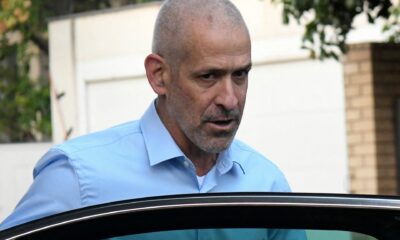
 Middle East2 days ago
Middle East2 days agoIsrael’s Shin Bet chief ousted by Netanyahu says will stand down on June 15 | News
-

 Europe2 days ago
Europe2 days agoAlexandra Fröhlich: Police launch murder investigation after bestselling novelist found dead on houseboat
-

 Conflict Zones13 hours ago
Conflict Zones13 hours agoAbout 600 North Korean soldiers killed in war in Ukraine, lawmakers say | Russia-Ukraine war News
-

 Lifestyle17 hours ago
Lifestyle17 hours agoAfter a year of turmoil, The Washington Post is taking note of its journalism again
-
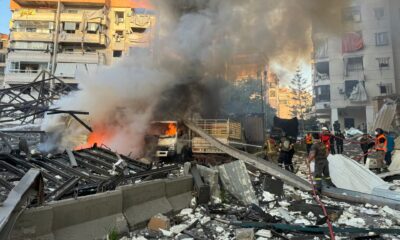
 Conflict Zones2 days ago
Conflict Zones2 days agoHezbollah leader says Lebanese gov’t must do more to end Israeli attacks | Hezbollah News
-

 Asia18 hours ago
Asia18 hours agoFall of Saigon: US officers who broke rank to save lives recall final days of Vietnam War 50 years on
-

 Africa22 hours ago
Africa22 hours agoBomb Blast Kills 26 in Northeast Nigeria




